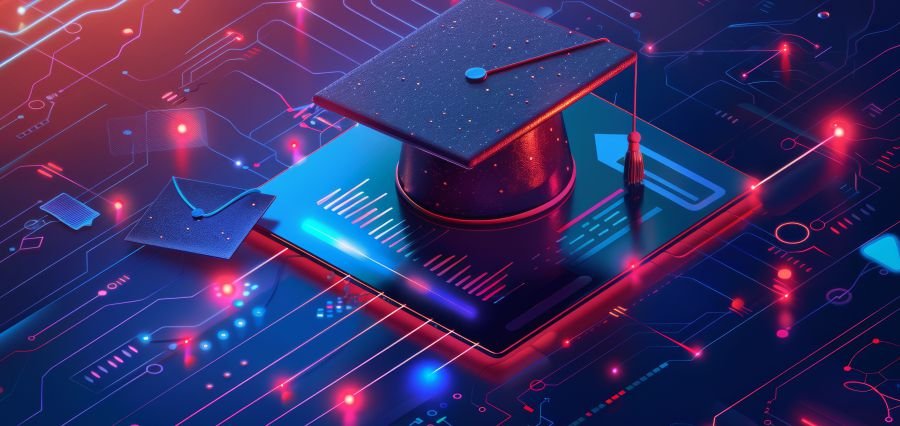In today’s fast-paced digital world, traditional learning methods are being challenged by innovative approaches that cater to the modern learner’s needs. Enter microlearning: a revolutionary concept that’s reshaping the educational landscape. This article explores the rise of microlearning platforms and their impact on bite-sized, on-the-go education.
The Microlearning Revolution
Microlearning refers to the delivery of educational content in small, focused units. These bite-sized lessons, typically lasting 3-10 minutes, are designed to be easily digestible and immediately applicable. The concept aligns perfectly with the shorter attention spans and busy lifestyles of today’s learners, making it an increasingly popular choice for both formal and informal learning environments.
Key Features of Microlearning Platforms
- Bite-sized Content: Information is broken down into small, manageable chunks that focus on specific learning objectives.
- Mobile-friendly: Most platforms are optimized for mobile devices, allowing learners to access content anytime, anywhere.
- Multimedia Integration: Content is presented in various formats, including text, images, videos, and interactive elements.
- Gamification: Many platforms incorporate game-like elements to increase engagement and motivation.
- Personalization: Adaptive learning algorithms tailor content to individual learner needs and preferences.
- Progress Tracking: Built-in analytics help learners and instructors monitor progress and identify areas for improvement.
Benefits of Microlearning
- Improved Retention: By focusing on one concept at a time, microlearning enhances information retention and recall.
- Flexibility: Learners can access content at their convenience, fitting education into their busy schedules.
- Cost-effective: Microlearning platforms often require less investment in time and resources compared to traditional learning methods.
- Rapid Development: Content can be created and updated quickly, ensuring that information remains current and relevant.
- Increased Engagement: Short, interactive lessons are more likely to keep learners engaged and motivated.
- Immediate Application: Learners can quickly apply newly acquired knowledge to real-world situations.
Popular Microlearning Platforms
Several platforms have emerged as leaders in the microlearning space, each offering unique features and approaches:
- Duolingo: This language-learning app uses short, gamified lessons to teach vocabulary and grammar in bite-sized chunks.
- Coursera: While known for its full-length courses, Coursera also offers “Guided Projects” – hands-on tutorials that can be completed in under two hours.
- LinkedIn Learning: Formerly Lynda.com, this platform offers short video courses on a wide range of professional skills.
- Grovo: Specializing in corporate training, Grovo provides microlearning content on various business topics.
- EdApp: This mobile-first platform allows organizations to create and deploy their own microlearning courses.
Implementing Microlearning in Various Settings
- Corporate Training: Companies are increasingly adopting microlearning for employee onboarding, skill development, and compliance training. The flexibility and efficiency of this approach align well with the demands of the modern workplace.
- Higher Education: Universities are incorporating microlearning elements into their curricula, offering short modules that complement traditional lectures and allow students to reinforce key concepts.
- Professional Development: Many professionals turn to microlearning platforms to acquire new skills or stay updated in their fields without committing to lengthy courses.
- K-12 Education: Some schools are experimenting with microlearning to supplement classroom instruction, providing students with additional resources for review and practice.
Challenges and Considerations
While microlearning offers numerous benefits, it’s not without challenges:
- Content Fragmentation: Breaking down complex topics into bite-sized units can sometimes lead to a loss of context or depth.
- Platform Overload: With numerous platforms available, learners may struggle to choose the most appropriate one for their needs.
- Quality Control: The ease of content creation can sometimes result in low-quality or inaccurate information being shared.
- Limited Scope: Some subjects may be too complex to be effectively taught through microlearning alone.
- Attention Span Concerns: While catering to shorter attention spans, microlearning may inadvertently contribute to further decreases in sustained focus.
The Future of Microlearning
As technology continues to evolve, so too will microlearning platforms. Some trends to watch include:
- AI-powered Personalization: Machine learning algorithms will become more sophisticated in tailoring content to individual learners.
- Virtual and Augmented Reality: Immersive technologies will enhance the microlearning experience, particularly for skills-based training.
- Voice-activated Learning: Integration with smart speakers and virtual assistants will make microlearning even more accessible.
- Social Learning Features: Platforms will increasingly incorporate collaborative elements, allowing learners to share insights and learn from peers.
- Micro-credentials: Short, focused courses will lead to digital badges or certificates, providing tangible recognition for acquired skills.
Conclusion
Microlearning platforms are revolutionizing the way we approach education and skill development. By offering bite-sized, on-the-go learning experiences, these platforms cater to the needs of modern learners who value flexibility, efficiency, and immediate application of knowledge. While not a complete replacement for traditional learning methods, microlearning serves as a powerful complement, filling gaps and providing opportunities for continuous learning in our fast-paced world.
As we move forward, the key to successful learning will likely involve a balanced approach that combines the best of both worlds: the depth and structure of traditional education with the flexibility and immediacy of microlearning. By embracing these innovative platforms, learners, educators, and organizations can stay ahead in an ever-changing landscape, ensuring that knowledge acquisition remains accessible, engaging, and relevant in the digital age.


